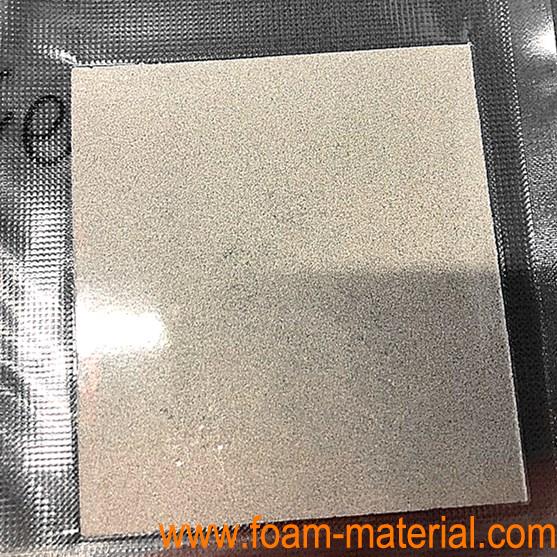Silver Metal Foam: Production Technology, Applications, and Real-World Impact
Production Technology:
Silver metal foam, also known as silver foam, is a lightweight and highly porous material composed of interconnected silver metal cells. It is produced through a process known as "metal foam fabrication." Here's an overview of the production technology:
Metal Powder Preparation: The process starts with the preparation of silver metal powder. This powder is often derived from silver metal or silver-containing compounds.
Foaming Agent Addition: Foaming agents are added to the metal powder to create a mixture. These agents release gas when heated, leading to the formation of pores in the metal structure.
Mixing and Formation: The metal powder and foaming agent mixture is thoroughly mixed to ensure uniform distribution. It is then compacted to the desired shape using molds or other forming techniques.
Foaming: The compacted mixture is heated to a temperature where the foaming agent releases gas. This gas creates bubbles within the metal matrix, resulting in a porous structure.
Sintering: After foaming, the material is sintered at a high temperature to bond the silver particles and create a solid metal foam structure.
Applications:
Silver metal foam finds applications across various industries due to its unique properties. Some notable applications include:
Thermal Management: Silver metal foam is used in electronic devices, power electronics, and LED lighting systems to efficiently dissipate heat. Its high thermal conductivity allows for improved heat transfer.
Catalysis: The high surface area of silver metal foam makes it suitable for catalytic applications. It is used in chemical processes, such as hydrogenation and oxidation reactions.
Electromagnetic Shielding: The porous structure of silver metal foam can provide electromagnetic shielding, making it useful in electronics and communication equipment.
Filtration: The porous nature of the material allows it to be used as a filter medium for gas and liquid filtration applications.
Energy Storage: Silver metal foam can be utilized in energy storage devices, such as batteries and supercapacitors, due to its high surface area and electrical conductivity.
Real-World Impact:
The utilization of silver metal foam has several real-world impacts:
Efficient Heat Dissipation: In electronics and automotive industries, silver metal foam enhances heat dissipation, improving the reliability and performance of devices and systems.
Catalytic Advancements: In chemical processes, silver metal foam's catalytic properties can lead to more efficient and eco-friendly reactions.
Environmental Remediation: Silver metal foam's porous structure aids in environmental applications like water purification and air filtration.
Technological Advancements: Silver metal foam contributes to advancements in various fields, from electronics to energy storage, driving innovation and progress.
In conclusion, silver metal foam's production technology yields a versatile material with applications across diverse industries. Its impact on heat dissipation, catalysis, filtration, and energy storage demonstrates its role in shaping technology and addressing real-world challenges.
Relevant metal foam products: Aluminum foam, Cu Foam, Nickel Foam, Iron Nickel Foam, Stainless Steel Foam
